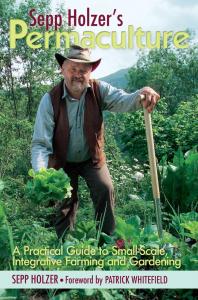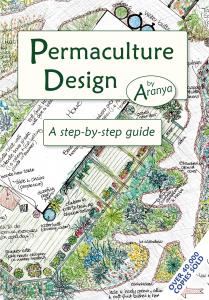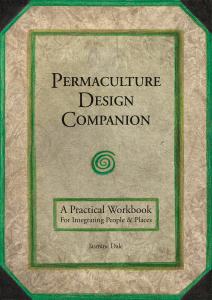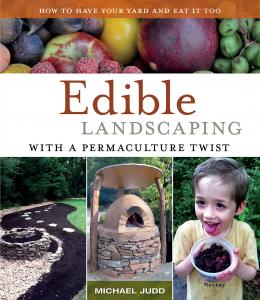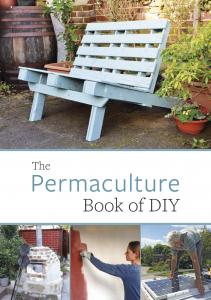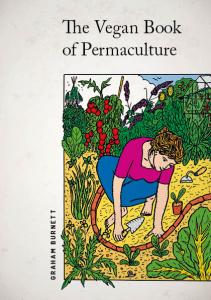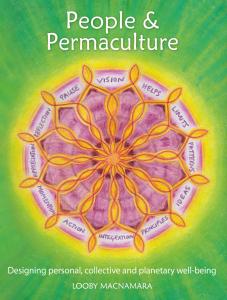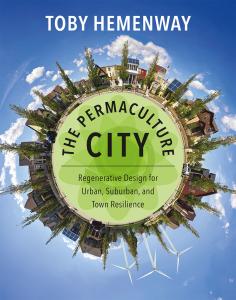Permaculture is a sustainable philosophy that applies nature’s principles to human living. It creates energy-efficient systems that are harmonious with the environment. Incorporating permaculture into your daily life can benefit your health and the environment. The twelve permaculture principles and the five zones provide a roadmap for adopting an environmentally conscious lifestyle. Understanding and applying these principles to your living space can transform it into a permaculture paradise.
A Close Look at the 12 Principles
The 12 permaculture principles are a backbone for anyone embracing this holistic approach to living and agriculture. Each principle isn’t just a standalone idea; it’s part of an interconnected framework that, when integrated, can foster resilient, sustainable, and productive systems. I will explain why these principles matter and how they fit together to form a cohesive strategy for ecological harmony and efficiency.
Observe and interact
Observing and interacting with nature is more than just a leisure activity; it’s a fundamental aspect of crafting a thriving permaculture design. By attuning yourself to your environment’s natural cycles and subtle details, you’re aligning with nature and integrating sustainable practices like no-till methods, effective composting, and rainwater harvesting. This approach enables you to work harmoniously with the environment, enhancing your garden’s productivity. It’s not solely about achieving better outcomes; it’s also about cultivating a profound connection with the land, understanding the importance of heirloom plant cultivation, and implementing natural pest management through Integrated Pest Management (IPM). Such practices ensure that your garden not only thrives but also contributes to the health and sustainability of the ecosystem.
Catch and Store Energy
Catching and storing energy in permaculture extends beyond the realm of solar panels. It’s about harnessing the full spectrum of natural abundance that surrounds us—this includes collecting rainwater for irrigation, utilizing wind energy, and even capturing the soil’s inherent fertility through no-till methods and effective composting. By implementing these strategies, we’re storing energy and vital resources like water and nutrients for future use. This principle is integral to creating a self-sustaining garden, ensuring we have the necessary resources during less abundant times. It’s a cycle of sufficiency that echoes sustainable gardening principles, from the conservation of heirloom seeds to natural pest management through Integrated Pest Management (IPM), all contributing to a resilient and productive ecosystem.
Please read my post on The First Step in Integrated Pest Management (IPM) for the start of a series on IPM
Obtain a Yield
In permaculture, obtaining a yield is essential—it’s why we garden. It’s not just about harvesting crops but also enjoying our gardens’ beauty and refuge. This yield isn’t only measured in fruits and vegetables; it’s also in the joy and satisfaction we derive from a flourishing garden, one that’s enhanced by practices like companion planting, which boosts yield and biodiversity.
Apply Self-Regulation and Accept Feedback
This principle involves adapting based on experience. If a strategy, like a particular no-till method or pest management approach, isn’t practical, it’s crucial to adjust. It’s about evolving our practices using feedback to improve soil health, plant resilience, and overall garden productivity.
Use and Value Renewable Resources and Services
Emphasizing renewable resources, such as rainwater harvesting and composting, aligns with permaculture’s ethos. This approach reduces reliance on non-renewable inputs, fostering sustainable interactions with our ecosystem and ensuring long-term garden vitality.
Produce No Waste
Permaculture views ‘waste’ as a resource. Kitchen scraps transform into compost, enriching the soil. Old plant material can mulch garden beds. Embracing this circular economy concept means everything in the garden has a purpose and contributes to a sustainable cycle.
Design from Patterns to Details
Recognizing natural patterns, like water flow or plant growth habits, aids in designing effective, adaptable gardening systems. By understanding these patterns, we can create gardens that are not only productive but also integrated with the surrounding environment.
"Here's a little transparency: Our website contains affiliate links. This means we may receive a small commission if you click and make a purchase. Don't worry; there's no extra cost for you. It's a simple way you can support our mission to bring you quality content."
Integrate Rather than Segregate
Synergy is vital in permaculture. Companion planting exemplifies this principle, where different plants support each other's growth. This integration reduces external input needs and creates self-sustaining systems within the garden.
Use Small and Slow Solutions
Embracing small, incremental steps in your garden, such as implementing a no-till method, starting a composting routine, or setting up a rainwater barrel, leads to more sustainable, manageable growth. These practices mirror natural processes, enhancing the resilience of your garden. By taking these small steps, you align closely with permaculture and sustainable gardening principles, ensuring your garden thrives in harmony with the environment.
Use and Value Diversity
Diversity in a garden—be it in plant species, microhabitats, or gardening methods—creates a robust system. A variety of plants and practices guards against pests and diseases and builds a resilient, resource-rich ecosystem.
Use Edges and Value the Marginal
Balconies, footpath verges, and even the edges of driveways are just a few examples of spaces that can be transformed into productive areas. By utilizing these spaces, gardeners can create diverse microclimates and habitats, increasing the garden's productivity and ecological value. Additionally, herbs such as nettle and dandelion can be foraged from the edges of footpaths or unused plots of land, using resources that would otherwise go to waste.
Creatively Use and Respond to Change
Adapting to change is crucial in permaculture. Whether it's climate fluctuations or evolving garden ecosystems, responding creatively and flexibly ensures the garden remains resilient and productive, continually adapting to new conditions and challenges.
With these 12 principles as a guide, permaculture becomes more than a cultivation method; it's a philosophy for living in harmony with nature. But how does this translate to the physical layout of a sustainable environment? That will include understanding the five zones of permaculture, which organize the land based on the amount of human intervention and the energies present. Indeed, moving smoothly into the five-zone framework is essential for practically applying these principles.

The Five Zones of Permaculture
Zone 0
Anchoring sustainability in our daily lives starts from our homes and living spaces. Zones in permaculture aren't limited to the outdoors; they begin right at our front door. In this context, Zone 0 refers to our house or apartment, which serves as the nerve center for our sustainable lifestyle. Creating an energy-efficient, waste-conscious, and supportive living space must align with permaculture principles. Simple upgrades like insulation, water-saving fixtures, and renewable energy sources can make a significant difference.
Zone 1
When planning out the layout of a home garden, it is essential to consider the different zones and their respective purposes. The area closest to the home, Zone 1, is typically reserved for features that require frequent attention and accessibility. This includes herb gardens, where you can grow your favorite herbs for cooking or medicinal purposes, salad gardens for fresh greens, and kitchen gardens for vegetables that you use often in your cooking. Compost bins can also be placed in this zone to make recycling kitchen and garden waste easier.
Zone 2
ly supervision, but still benefit from occasional monitoring. In this zone, you can find fruit trees, shrubs, and bushes that may need seasonal pruning, fertilizing, or harvesting. You can also keep free-range chickens, ducks, or other poultry that can forage for food on their own, but still require protection from predators and adequate shelter. Zone 2 is a great place to grow food and raise animals that offer a good return for moderate effort and provide ecological benefits such as soil improvement, pest control, and biodiversity.
Zone 3
Scaling up permaculture to larger farming practices. As we extend further from the home, Zone 3 feels a bit more like traditional agriculture, but with a permaculture twist. Here, larger crop yields and more extensive livestock herds are managed with permaculture methods to maintain sustainability.
Zone 4
The role of semi-wild areas in permaculture systems. Don't overlook the semi-wild zones. Zone 4 may require less frequent human visitation, but it's a treasure trove of resources. From foraged foods to natural materials, semi-managed landscapes play a crucial role in the self-sufficiency of a permaculture system. And guess what? They are also habitats critical to wildlife, contributing to biodiversity and the entire system's health.
Zone 5
Permaculture design emphasizes the preservation of natural ecosystems. In this design, Zone 5 represents the wild and untouched heart of the landscape. Human intervention in this zone is minimal, allowing nature to thrive and maintain biodiversity. This zone acts as a reservoir for biodiversity and serves as a benchmark for the health of the surrounding areas. Zone 5 plays a crucial role in achieving this goal by keeping the overall harmony and sustainability of the ecosystem.
"Here's a little transparency: Our website contains affiliate links. This means we may receive a small commission if you click and make a purchase. Don't worry; there's no extra cost for you. It's a simple way you can support our mission to bring you quality content."
Cultivating Self-Sufficiency and Resilience
Permaculture is more than just gardening; it's a down-to-earth lifestyle strategy for personal and community resilience. It's about starting small, maybe with a balcony garden or a spot in a community plot, and growing your own food. This boosts food security by lessening our reliance on big agriculture and shaky supply chains, bringing us closer together. Growing food locally strengthens community ties and reduces our dependence on outside resources, making us tougher in the face of disruptions.
Beyond food, permaculture makes economic sense, too. It reduces waste and supports local resources, saving money on transport and reducing our carbon footprint. But the perks don't stop at your wallet. A real mental health boost comes from digging your hands into the soil and growing something from a seed. It's good for your mind, giving you a sense of accomplishment and connecting you with your neighbors in a shared goal.
Health-wise, a permaculture garden is a diet rich in diverse, organic veggies from your backyard. This variety isn't just good for your plate; it helps the local wildlife, too, inviting birds and beneficial bugs and boosting the area's biodiversity.
Starting with permaculture is as easy as choosing what you like. You don't need a vast space; even the tiniest plot can kickstart your journey. As you learn, your garden grows, and before you know it, you're also growing plants, resilience, and community spirit.
A Path to Sustainability
Permaculture is not just gardening but creating a sustainable lifestyle. Apply zoning strategies to create a functional environment that improves your quality of life. Permaculture is adaptable to different contexts and scales, instigating positive change and resilience in the face of environmental challenges. Don't worry about getting everything perfect. Celebrate each stride towards a greener and more self-sufficient lifestyle. Every small change contributes to a more significant impact. Incorporate permaculture principles into your life and share your experiences. Let's continue to learn from each other.
Please read my post on The Essential Guide To Sustainable Heirloom Gardening Practices for a more holistic view.

